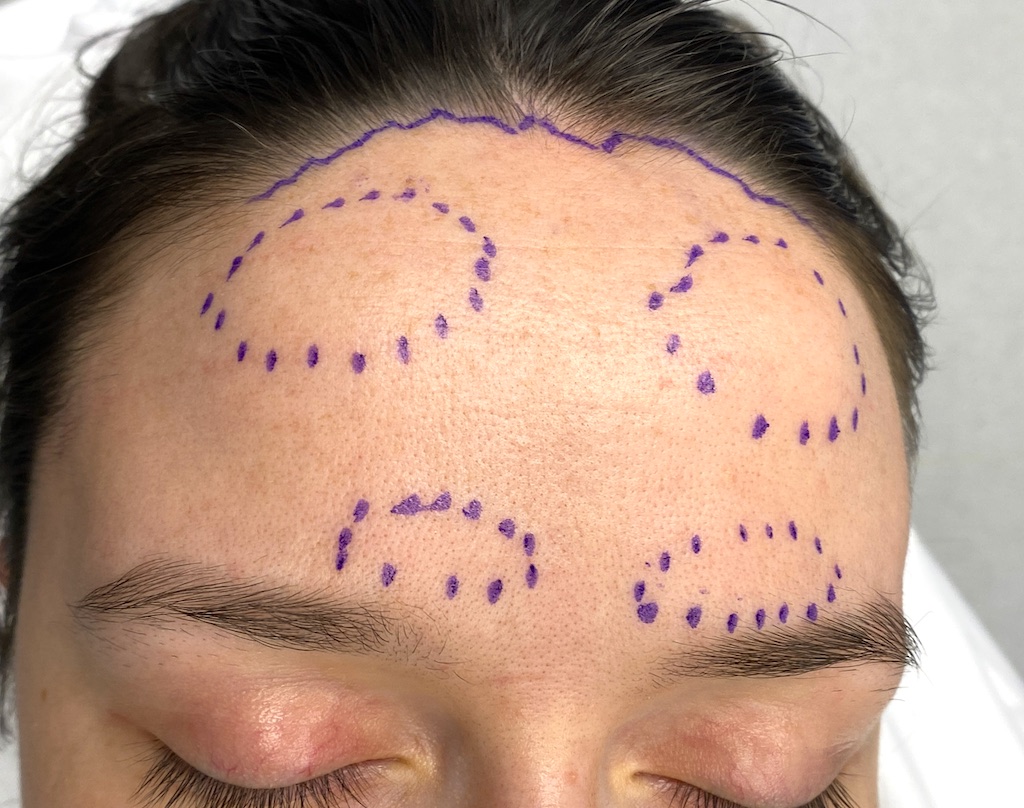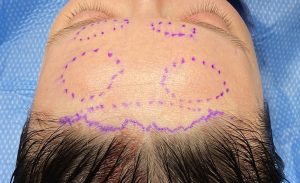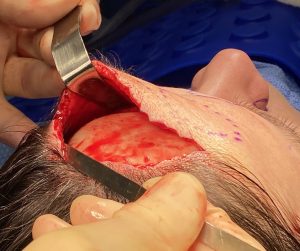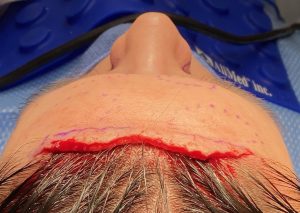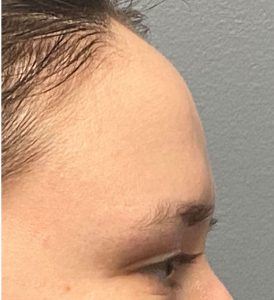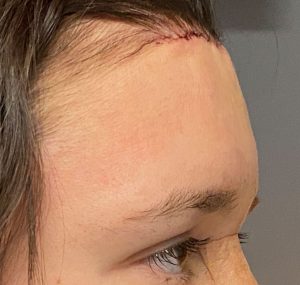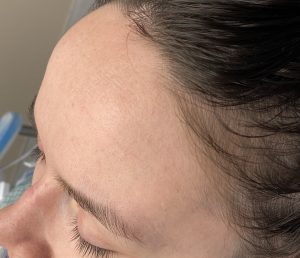Background: Forehead feminization today is typically associated with a transgender male to female patient. The most common procedure used for this forehead softening effect is a brow bone reduction. Because the congenital male brow bone is more developed than a females the technique used to adequately reduce its projection is a bone flap setback technique for the most prominent inner half of the brow bones. The tail of the brow is often also reduced but, because it is solid bone, it can be done so by a bone burring method.
But forehead feminization can also be done for the cis-female. While the overall aesthetic objectives are similar, the forehead issues are a bit different and so are the techniques used to treat it. Females may consider their forehead to be masculine appearing when they are certain bony prominences present. These can include forehead horns, frontal bossing and the presence of small medial brow bone mounds and/or a tail of the brow bone that has too much projection. Such forehead bony prominences can all be reduced by bone burring including the medial brow bone prominences that do not require a bone flap setback technique.
In addition a long forehead due to a high frontal hairline, which is not necessarily a masculinizing feature per se, is never viewed as a favorable female forehead asset. While there are numerical measurements for what constitutes a high frontal hairline (usually greater than 6.5cms) what aesthetically makes it high is when it sits behind the curve of the upper forehead. In essence the hairline has turned the corner and now sits more on the top of the skull than at the upper edge of the forehead. This also creates a pseudo frontal bossing effect as too much of the forehead-skull curve is revealed. Lowering the hairline in female forehead feminization serves two purposes. It puts the hairline onto the upper forehead, shortening it of course, but also reducing some or all of the frontal bossing appearance. It also provides incisional access to do all of the bony forehead reductions.
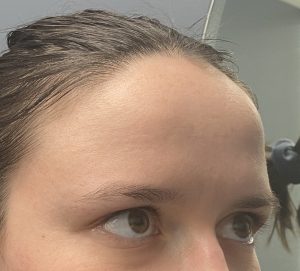
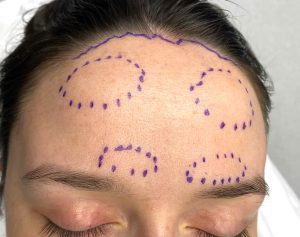
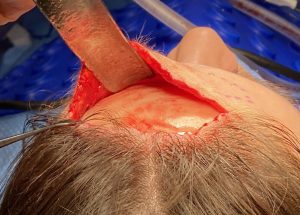

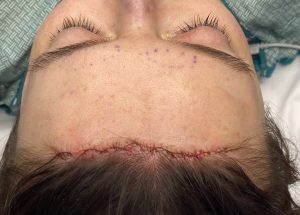
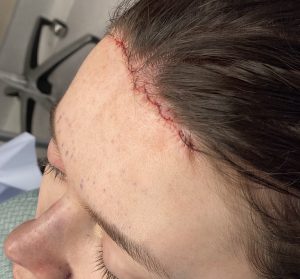
Case Highlights:
1) Female forehead feminization usually entails brow bone reduction with upper forehead reduction which may or may not include a frontal hairline advancement.
2) The difference between cis-female and transgender brow bone reduction is the amount of reduction is less with a burring technique used to do it.
3) Prominent horns or frontal bossing of the upper forehead is reduced by burring for a less prominent and flatter profile.
Dr. Barry Eppley
Indianapolis, Indiana

